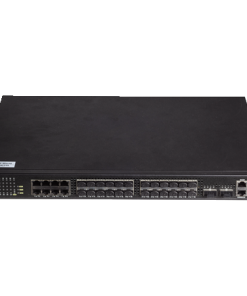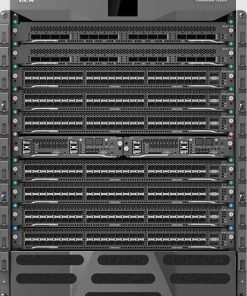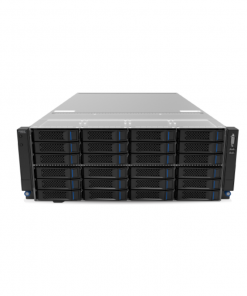Cloud Optimization is the process of correctly selecting and assigning the right resources to a workload or application.
When workload performance, compliance, and costs are balanced correctly and continuously against the most suitable infrastructure in real time, efficiency is achieved.
Each application and workload’s need for infrastructure is unique and these requirements evolve over time.
Base performance is typically achieved by applying domain knowledge when selecting resources for workloads, but all workloads that are manually matched against cloud resources can take advantage of and are further optimized using machine intelligence.
Applications whose needs are running dynamically matched with the optimal cloud supply perform better.
Requires fewer resources to manage and supports less on-premises and cloud infrastructure, and provides maximum value for cloud spending.
Check out NetData Router Products here :
Table of Contents
Cloud Cost Optimization
Cloud cost optimization is the process of reducing your overall cloud expenditure by identifying mismanaged resources, eliminating waste.
reserve capacity for higher discounts, and the Right Sizing compute service to scale.
Cloud Optimization offers organizations unlimited scalability and lower IT costs only for the resources you use.
But the truth about Amazon Web Services (AWS) pricing and Microsoft Azure pricing is that cloud customers are charged for the resources they order, whether they use them or not.
In their latest report, How to Identify Solutions to Manage Costs in a Public IaaS Cloud.
Gartner analysts Brandon Medford and Craig Lowery estimate that as much as 70% of cloud costs are wasted. Fortunately, there are many best practices for cloud cost optimization.
Best Practices for Implementing Cloud Cost Optimization
Find Unused or Unattached Resources
The easiest way for cost-related Cloud Optimization is to search for unused or unused resources.
Often an administrator or developer may “run” a temporary server to run a function, and forget to shut it down when the job is done.
In other common use cases, administrators may forget to delete the storage attached to the instances they terminate. This happens frequently in IT departments throughout the company.
The result is that your organization’s AWS bill and Azure bill will cover the cost for resources that they have purchased but are no longer using.
A Cloud Optimization strategy should start with identifying unused and truly disconnected resources and removing them.
Identify and Consolidate Missing Resources
The next step in optimizing Cloud Optimization costs is to address idle resources.
Idle compute instances may have a CPU usage rate of 1-5%. When a company is billed for 100% of that compute instance, that’s a significant waste.
The main Cloud Optimization cost optimization strategy is to identify these instances and consolidate the compute work into less practicality.
In the age of data centers, administrators often wanted to operate at low utilization so that they had prime room for traffic spikes or peak seasons.
Adding new resources to a data center is difficult, expensive and inefficient. In contrast, the cloud offers automatic scaling, load balancing, and on-demand capabilities that let you increase your computing power at any time.
Leveraging Heat
Maps Heatmaps are an important mechanism for Cloud Optimization costs. Heat maps are visual tools that show peaks and valleys in computational demand.
This information can be useful in setting start and stop times to reduce costs. For example, a heatmap can show whether a development server can safely shut down over the weekend.
While this can be done manually, a better option is to take advantage of automation to schedule instances to start and stop, optimizing for costs.
RightComputing Services RightComputing
SizeSizeis the process of analyzing a compute service and modifying it to the most efficient size.
According to Nik Simpson of Gartner, in his report Choosing the Right AWS EC2 Instance to Migrate Your Workload.
It is difficult to properly gauge practicality when a cloud administrator has more than 1.7 million possible combinations to choose from.
In addition to server size, there are options for servers that are optimized for memory, database, compute, graphics, storage capacity, throughput, and more.
An Appropriate Sizing Tool can also recommend changes across the sample family if necessary.
The Right Size does more than just reduce cloud costs, it helps Cloud Optimization, which means achieving peak performance for the resources you pay for.
Investing through AWS Reserved Instances (RIs) or Azure Reserved VM Instances (RIs)
Companies committed to the cloud for the long term must invest in RIs. This is a bigger discount based on a prepayment and a time commitment.
RI savings can be up to 75%, so this is a must for cloud cost optimization. Since RIs can be purchased for a year or three, it is important to analyze your past usage and prepare well for the future.
Take advantage of Spot Instances Spot
instances are very different from RIs, but they can help you save more on AWS spending or Azure spend.
Spot Instances are available for auction and, if the price is right, can be purchased for immediate use. However, opportunities to purchase Spot Instances can quickly disappear.
That means they are best suited for specific computational cases such as batch jobs and jobs that can be terminated quickly.
This kind of work is common in large organizations, so Spot Instances should be a part of any cloud cost optimization strategy.
Choosing between Multi-Cloud or Single Cloud
Some companies purposely seek multi-cloud solutions to avoid vendor lockdowns. While this is a valid strategy for increasing availability and uptime, these organizations may be at risk of missing out on potential volume discounts by one cloud vendor.
For example, if a company spends $ 500,000 on AWS + $ 300,000 on Azure + $ 200,000 on Google Cloud Platform, they could lose the $ 1 million milestone with one vendor.
That $ 1 million rate value might be a huge discount on overall cloud spend, as well as preferred status with that particular vendor.
Additionally, the ability to save money with a multi-cloud strategy can be overpowered by the administrative complexity of switching between platforms, paying for network traffic between clouds, and training staff across multiple clouds.
Conclusion
Cloud has great potential. The promise of saving money using Cloud Optimization can be fulfilled, as long as attention is paid to the costs of Cloud Optimization.
Interested in cloud optimization services from NetData? you can contact us here.
![]()










